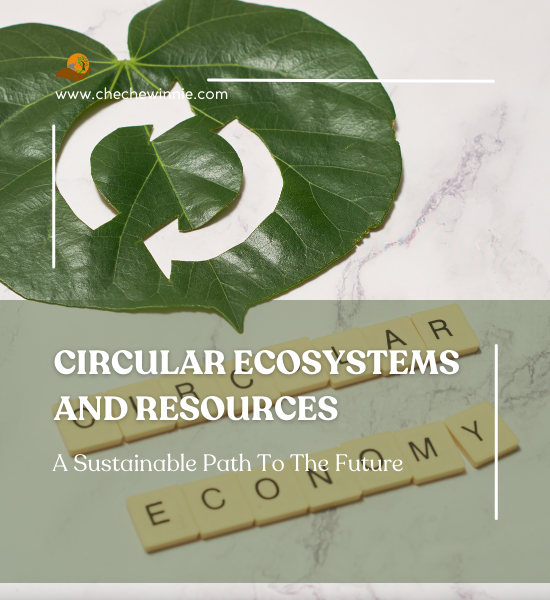Introduction
Circular ecosystems and resources refer to the concept of designing systems that emulate natural ecosystems, where waste is minimized, resources are conserved and reused, and materials are continuously cycled to create a closed-loop system.
This approach aims to create sustainable systems that are regenerative and resilient, in contrast to the linear, “take-make-dispose” model of production and consumption that dominates many industries today.
Circular ecosystems and resources can take many forms, from natural systems like forests and wetlands that efficiently cycle nutrients and support diverse life forms, to human-designed systems like closed-loop industrial processes that recycle materials and energy.
What are Circular Ecosystems and Resources?
Circular ecosystems and resources are becoming an increasingly important topics in the context of creating a sustainable future. The current linear model of production and consumption, where resources are extracted, processed into goods, used, and then disposed of as waste, is not sustainable in the long term. This model relies on finite resources and generates significant waste and pollution, contributing to environmental degradation and climate change.
Circular ecosystems and resources offer a solution to this problem by designing systems that mimic natural ecosystems, where waste is minimized and resources are conserved and reused.
Benefits of circular systems, including reduced waste and increased resilience
Circular Ecosystems
Circular ecosystems refer to natural systems like forests, wetlands, and coral reefs that efficiently cycle nutrients and support diverse life forms. These systems are characterized by closed-loop nutrient cycles, where waste from one organism becomes food for another. This creates a regenerative and resilient system that can support life for future generations.
Examples of Circular Resource Management
- Circular agriculture systems: These are farming systems that mimic natural ecosystems, with a focus on regenerating soil health, minimizing waste, and using renewable resources like sunlight and rainwater. Practices like agroforestry, regenerative grazing, and no-till farming are all examples of circular agriculture.
- Closed-loop industrial processes: Many industries are starting to adopt circular design principles, where waste materials are captured and reused within the production process. For example, textile manufacturers might recycle old clothing into new fibers, or aluminium producers might use scrap metal to create new products.
- Circular cities: Urban areas are also starting to adopt circular design principles, where waste is minimized and resources are conserved and reused. This can include things like green roofs and walls that capture rainwater and reduce the urban heat island effect, or urban agriculture initiatives that turn vacant lots into productive green spaces.
Overall, circular ecosystems and resources represent a promising approach to creating more sustainable, resilient systems that can support human well-being and protect the planet’s natural resources for generations to come.
Guiding principles of the circular economy:
- Design out waste and pollution
- Keep products and materials in use
- Regenerate natural systems
Challenges and Opportunities
While the benefits of circular ecosystems and resources are clear, there are also challenges to making this transition. These include policy barriers, lack of consumer awareness, and resistance from industry stakeholders. However, the opportunities that exist in creating a circular economy are significant, including job creation, increased resource efficiency, and reduced environmental impact.
Conclusion
In conclusion, circular ecosystems and resources offer a promising path towards a more sustainable and resilient future. By adopting circular design principles and supporting the transition to a circular economy, we can create regenerative, resilient, and equitable systems for all.
Thank you for your attention!
Let’s work together to create a sustainable future through circular ecosystems and resources.

